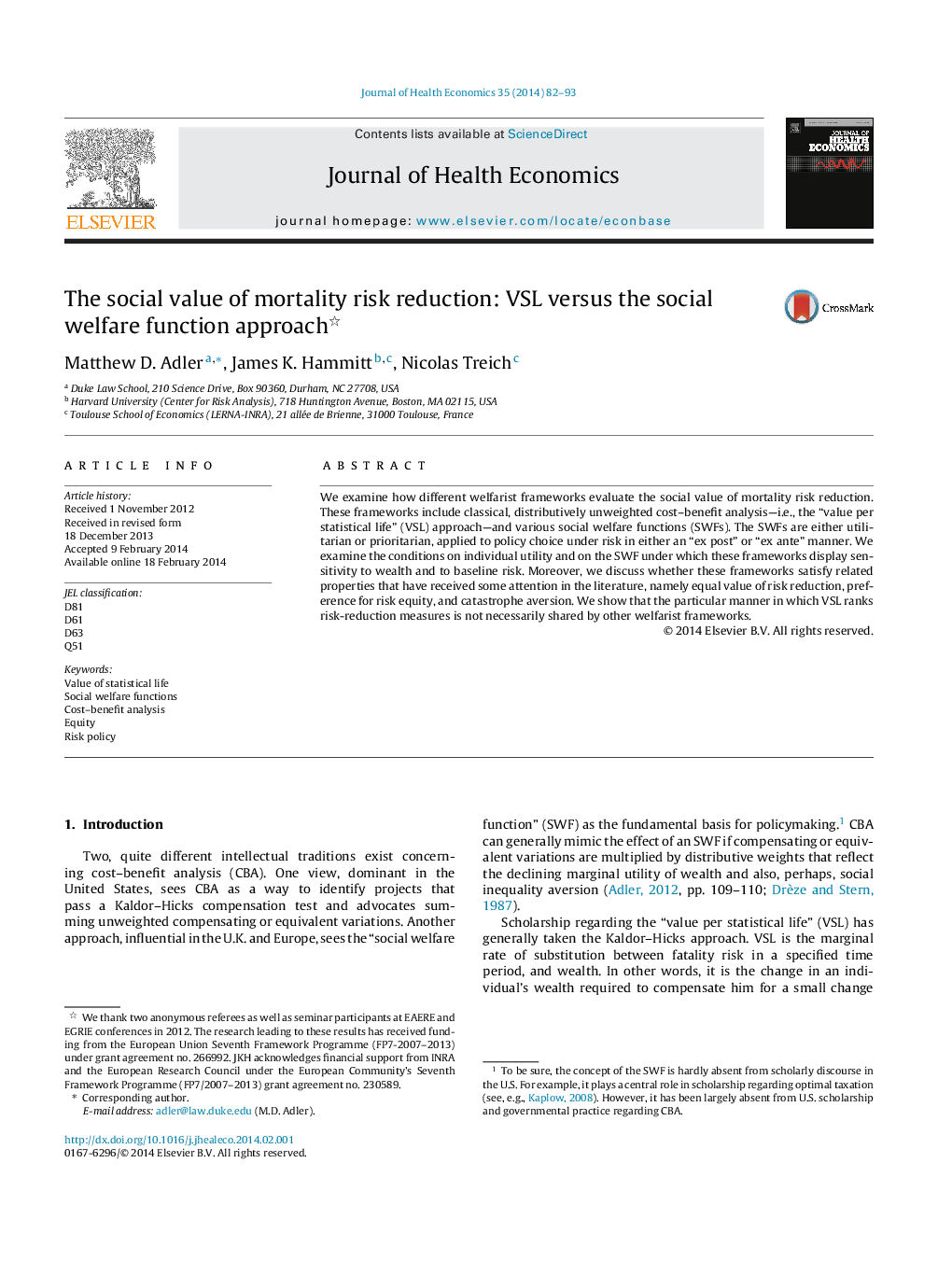| Article ID | Journal | Published Year | Pages | File Type |
|---|---|---|---|---|
| 7363498 | Journal of Health Economics | 2014 | 12 Pages |
Abstract
We examine how different welfarist frameworks evaluate the social value of mortality risk reduction. These frameworks include classical, distributively unweighted cost-benefit analysis-i.e., the “value per statistical life” (VSL) approach-and various social welfare functions (SWFs). The SWFs are either utilitarian or prioritarian, applied to policy choice under risk in either an “ex post” or “ex ante” manner. We examine the conditions on individual utility and on the SWF under which these frameworks display sensitivity to wealth and to baseline risk. Moreover, we discuss whether these frameworks satisfy related properties that have received some attention in the literature, namely equal value of risk reduction, preference for risk equity, and catastrophe aversion. We show that the particular manner in which VSL ranks risk-reduction measures is not necessarily shared by other welfarist frameworks.
Related Topics
Health Sciences
Medicine and Dentistry
Public Health and Health Policy
Authors
Matthew D. Adler, James K. Hammitt, Nicolas Treich,
